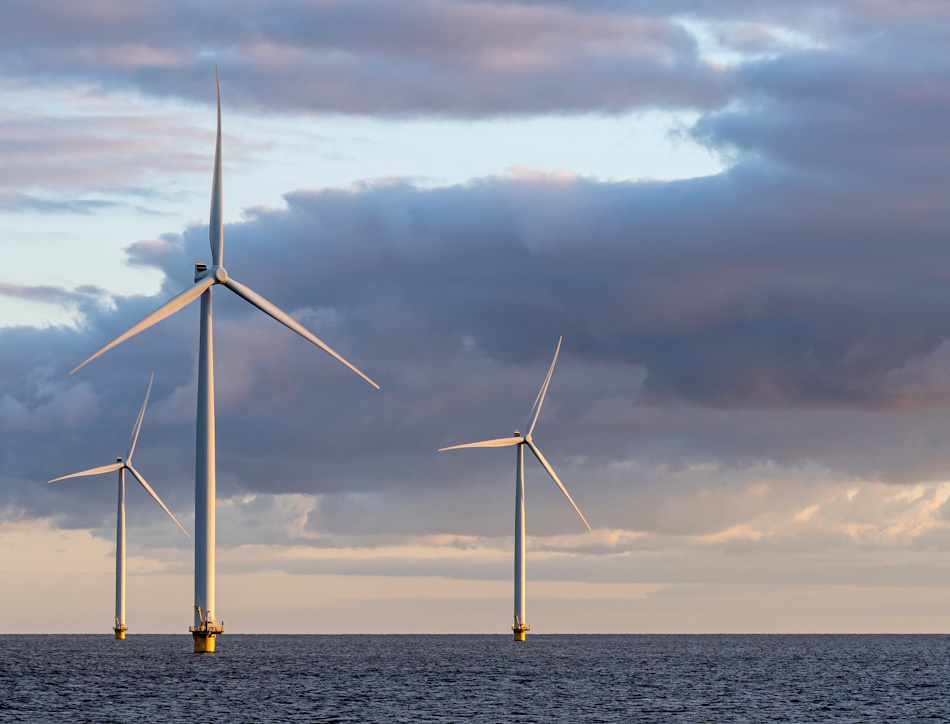
Politicians in the UK and elsewhere are pursuing the dream of domestically secure, cheap and ideally clean energy. The current UK government aims for a fully decarbonised electricity system by 2035, subject to security of supply, and net zero emissions across the whole of the UK by 2050.
Is this possible? Do the economics stack up?
Until recently, the trends were heading in the right direction. Costs of offshore wind had fallen to well below wholesale power prices set by fossil fuels, with solar and onshore wind even cheaper. And renewable electricity boomed: last year, 48.5% of our electricity came from renewable sources, compared to 40% from gas and coal power stations.
In the September 2023 round of the UK government’s flagship renewable energy auctions, however, there were no bids for the available 5GW of offshore wind – enough to power eight million homes – undermining the UK’s plan to triple its offshore wind capacity to reach 50GW by 2030. The maximum price for offshore wind, set by the government at £44/MWh in 2012 prices, was seen as being too low, given the increased costs of materials, and higher borrowing costs to fund these multi billion-pound projects. The Department for Energy Security and Net-Zero (DESNZ) announced in November that, after an “extensive review”, the maximum strike price would be increased to £73 per MWh (in 2012 prices) for fixed offshore wind.
Because windfarms do not generate power when the wind is not blowing, a like-for-like comparison with gas and carbon capture, say, requires the cost of electricity storage to be factored in. If the UK power grid were to be entirely or primarily renewable-powered, we would need enough storage for acombination of periods when, in winter, there is little sun and potentially very little wind for a period of weeks at a time. Do renewables still stack up?
The bad news is that a recent report by the Royal Society – Long-term electricity storage – led by Sir Chris Llewellyn-Smith FRS, finds that the storage requirements in the UK are far greater than experts had previously calculated. Assuming that the power system is entirely renewable, which is technically feasible, and that electricity demand continues to increase, Llewellyn Smith calculates that potentially up to 100 TWh of stored energy delivering over 50 TWh of electricity could be needed. Right now, we have about 0.1% of the storage needed in a purely renewables world.
No matter how you look at it, the UK has a long way to go, irrespective of whether one accepts Sir Chris’s assumptions. The UK will need a vast increase in electricity storage, by perhaps a factor of 1000, and the Royal Society report urges the government to incentivise the construction of large-scale electricity storage to ensure the grid is secure in the coming decades. Given that significant quantities of energy will need to be stored for decades, low costs and minimal self-discharge are essential. This leads to chemical solutions, such as hydrogen, ammonia or e-methanol. Given the latter two are derived from hydrogen, the report concludes hydrogen is likely to serve as the backbone of the system.
Here’s the good news. Sir Chris estimates that a system based entirely on wind and solar, supported by large-scale hydrogen storage, and a possible mix of other storage options including compressed air and batteries, would not be expensive. He concludes a fully renewable GB grid with ample storage – i.e. the secure, domestic, clean nirvana sought by politicians – would cost much less than average wholesale prices in 2023, which were high, but at least 10% more than the average cost of electricity over the last decade.
Where would the hydrogen be stored? Sir Chris estimates that some 90 clusters of 10 caverns would be required. Luckily, the UK has exceptionally favourable geographical positioning. The British Geological Survey has identified ample hydrogen storage capacity in Cheshire, Wessex and East Yorkshire. There are already three hydrogen storage caverns in the UK, which have been in use since 1972. The risks of storing hydrogen appear no more concerning than the petrol, diesel and aviation fuels that are already part of our energy system. But local planning and engagement would need to start now.
What are the alternatives? The other large-scale low carbon sources of energy are nuclear, gas with carbon capture and storage (CCS), and bioenergy, potentially also with CCS (BECCS). None of these options is cheap, especially if operated flexibly. The history of nuclear is well known: large cost and build-time overruns and an unpredictable investment environment are the UK norm. Sizewell C, for example, was planned a decade ago and is still £20bn short. The history of CCS projects does not appear much better at this stage, but it could be argued that we are yet to try it properly.
As ever, there are no free lunches, but new and cheaper renewable-sources of electricity appear to offer the best economics, even once the costs of storage are incorporated. Of course, without the sort of reforms to the grid and the planning system set out by Nick Winser, the roll out of renewables will continue to be delayed and the 2035 target will look even more challenging. Amidst these uncertainties, the Royal Society’s conclusion that the government should start building extra hydrogen storage facilities seems correct, and the House of Lords (Environmental Audit Committee) is surely right that we should “get on with it”

